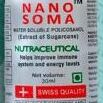The Science Behind Nanoemulsions: Enhancing the Efficacy of Long-Chain Alcohols
In recent years, the fields of pharmaceuticals, cosmetics, and food science have witnessed significant advancements in formulation technology. One of the most promising developments has been the application of nanoemulsions—ultra-fine emulsions that can enhance the solubility, stability, and bioavailability of lipophilic compounds, including long-chain alcohols. This article delves into the science behind nanoemulsions, their production methods, and their role in enhancing the efficacy of long-chain alcohols.
Understanding Nanoemulsions
Nanoemulsions are colloidal systems consisting of oil and water stabilized by surfactants, with droplet sizes typically ranging from 20 to 200 nm. Unlike conventional emulsions, which may have larger droplet sizes, nanoemulsions exhibit remarkable stability and a unique set of physicochemical properties. The extremely small size of the droplets leads to a high interfacial area, promoting rapid absorption and enhanced bioavailability of the incorporated compounds.
The Role of Long-Chain Alcohols
Long-chain alcohols—fatty alcohols with carbon chains containing 12 or more carbon atoms—are commonly used in various applications, including skincare products, food additives, and pharmaceutical formulations. While they possess beneficial properties, such as lubricity and emollience, their solubility in water is often limited. This hampers their efficacy, particularly in therapeutic or cosmetic applications where absorption and penetration into biological membranes are crucial.
Why Nanoemulsions?
1. Enhanced Solubility
Nanoemulsions increase the solubility of long-chain alcohols by effectively dispersing them in aqueous environments. The reduction in droplet size minimizes the energy barrier for dissolution, allowing these compounds to remain stable and bioavailable in solution. This characteristic is particularly beneficial in pharmaceutical applications, where enhanced solubility can lead to improved absorption rates.
2. Improved Bioavailability
One of the main challenges in drug formulation with long-chain alcohols is their poor bioavailability. The incorporation of long-chain alcohols into nanoemulsions facilitates their transport across biological membranes, thereby enhancing their pharmacokinetic profiles. For instance, encapsulating a long-chain alcohol within a nanoemulsion can lead to a more uniform distribution in the bloodstream, improving therapeutic outcomes.
3. Controlled Release
Nanoemulsions can be designed to provide controlled release of the encapsulated long-chain alcohols. By manipulating the surfactant properties and droplet size, formulators can develop systems that release the active ingredients over an extended period. This capability is particularly valuable in skincare formulations, where sustained hydration and nourishment are desired.
Production Methods
The fabrication of nanoemulsions typically involves mechanical and non-mechanical methods. The most common techniques include:
-
High-Pressure Homogenization: This mechanical process applies high shear and pressure to reduce droplet size significantly. It’s efficient and scalable, making it a popular choice for industrial applications.
-
Ultrasonication: This method uses high-frequency sound waves to create cavitation, leading to the fragmentation of emulsion droplets. It allows for quick production of nanoemulsions, particularly in small batches.
- Phase Inversion: This non-mechanical method involves the manipulation of phase behavior through temperature or composition adjustments. The phase inversion technique can produce stable nanoemulsions without the need for extensive mechanical energy.
Applications and Future Perspectives
The versatility of nanoemulsions makes them suitable for a wide range of applications:
-
Pharmaceuticals: Nanoemulsions enhance drug delivery systems, especially for poorly soluble therapeutic agents, allowing for greater efficacy in treatments.
-
Cosmetics: In the cosmetic industry, nanoemulsions improve the penetration and stability of long-chain alcohols, ensuring enhanced moisturizing and conditioning properties in formulations.
- Food and Nutrition: Nutraceuticals also benefit from nanoemulsion technology, which can increase the stability and bioavailability of fat-soluble vitamins and fatty acids.
Conclusion
The integration of nanoemulsions in enhancing the efficacy of long-chain alcohols signifies an important advancement in several industries. By addressing the challenges of solubility, bioavailability, and controlled release, nanoemulsions pave the way for improved formulations that cater to consumer and therapeutic needs. As research continues to advance, further innovations in nanoemulsion technology are anticipated, unlocking new possibilities for the efficacy of various bioactive compounds. This collaborative synergy between science and formulation technology holds the potential to revolutionize the way we approach product development across multiple sectors.
